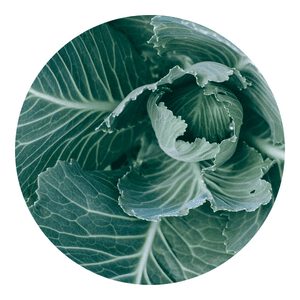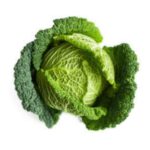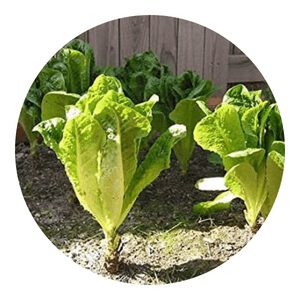How To Grow Organic Green Cabbage
Organic green cabbage is a nutritious and delicious addition to any meal.
Growing your own cabbage is easy and rewarding.
Here are some tips on how to grow organic green cabbage in your home garden.

Green Cabbage Menu
Why organic green cabbage is healthier
Organic green cabbage is a healthier option for a number of reasons.
First, organic green cabbage is produced without the use of harmful pesticides and chemicals. These chemicals can remain on the surface of the cabbage and be ingested when eaten.
Second, organic green cabbage is grown in soil that is free from harmful chemicals and pollutants. This ensures that the plants are not absorbing these toxins through their roots.
Finally, organic farmers use sustainable growing practices that protect the environment and preserve natural resources.
The best time to plant
Green cabbage is a hardy, cool-weather crop that does best when planted in the early spring or fall.
The key to success with green cabbage is to start with healthy plants and give them plenty of room to grow.
Cabbage likes full sun but will also do well in partial shade. The soil should be rich and well-drained, with a pH between 6.0 and 7.0.
Before planting, work some compost or aged manure into the soil to improve its fertility.
Green cabbage is usually started from seedlings rather than seeds.
Set out plants 18 to 24 inches apart in rows that are 2½ to 3 feet apart.
Grow organic green cabbage in your home garden patch it's easy to do and so good for you fresh and crisp and nutritious full of vitamins and minerals cabbage is a powerhouse veggie that you should add to your diet today!
Chappy The Gardener
Caring for your cabbage
If you’re looking to add some green to your garden, why not try growing cabbage?
Cabbage is a cool weather crop that’s easy to grow and care for.
Here’s what you need to know to get started.
Cabbage likes cool weather and lots of water, so it’s a great crop to grow in the spring or fall. When planting, be sure to space your cabbage plants 18-24 inches apart.
As your cabbage grows, you’ll need to water it regularly – about 1 inch per week.
You can use a soaker hose or drip irrigation system to deliver water directly to the roots of your plants.
Cabbage is a relatively pest-free crop, but you may find yourself dealing with aphids or caterpillars at some point.
Luckily, there are plenty of organic solutions you can use to keep these pests at bay.
Pests and diseases green cabbage
Cabbage is a cool weather crop that is very susceptible to pests and diseases.
Green cabbage is especially vulnerable to the cabbage root fly, which lays its eggs at the base of the plant.
The larvae then hatch and feed on the roots, causing the plant to wilt and die.
Other common pests include caterpillars, aphids, and whiteflies.
Diseases that affect cabbage include black rot, downy mildew, and white blister.
Organic farmers have to be extra vigilant when growing green cabbage to make sure their plants are healthy and free of pests and diseases.
They often use row covers to keep pests from getting to the plants, and they rotate their crops so that diseases don’t have a chance to build up in the soil.
The best organic fertilizer for green cabbage
Green cabbage is a cool weather crop that does best in full sun. The soil should be rich in organic matter and well-drained.
A general purpose fertilizer can be used when starting the seedlings.
For transplants, use a high phosphorus fertilizer such as bone meal to encourage root growth.
During the growing season, side dress with compost or manure tea every 4-6 weeks.
How to grow green cabbage hydroponically
Cabbage is a cool weather crop that can be grown year-round in many areas.
It is a fast-growing crop that does well in hydroponic systems.
Cabbage can be grown from seed or transplants.
To grow cabbage hydroponically, start with good quality seed or transplants.
Choose a variety that is suited for your climate and growing conditions.
Start seeds in an inert medium such as perlite or vermiculite.
Sow seeds thinly and keep the media moist but not wet.
When seedlings are large enough to handle, transplant them into individual pots or net pots filled with an inert medium.
Cabbage prefers a slightly acidic pH range of 5.8 to 6.2.
How to grow green cabbage in a pot or raised beds
If you’re short on space or are looking for an easy crop to grow, then cabbage is a great option.
Cabbage can be grown in a pot or raised bed, and with just a little care, you can enjoy fresh, organic green cabbage all season long.
Here’s what you need to know to get started.
To grow cabbage in a pot, choose a container that is at least 12 inches wide and 18 inches deep. Fill the pot with quality potting mix and water it well.
Sow the seeds about 1/2 inch deep and water regularly to keep the soil moist but not soggy.
When the seedlings are 4-6 inches tall, thin them out so that they are about 10 inches apart.
To grow cabbage in raised beds, prepare the beds by adding compost or other organic matter to improve drainage and fertility.
How to grow green cabbage aquaponics
Cabbage is a cool weather crop that is easy to grow in an aquaponic system.
Here are some tips on how to successfully grow green cabbage in your aquaponics setup:
To start, you will need to purchase seedlings or started plants from a nursery.
Cabbage seeds can also be germinated indoors before transplanting to the aquaponics system.
Once you have your seedlings or started plants, transplants them into hydroton clay pellets or net pots filled with a soilless growing medium.
Place the plants in the media bed, making sure that each plant has enough space to grow.
Cabbage prefers a pH level between 6.0 and 7.0 and needs about six hours of direct sunlight per day.
The water temperature should also be cool, around 60-70 degrees Fahrenheit.
How long does it take to grow green cabbage?
In general, it takes about 60-70 days to grow green cabbage. The actual time may vary depending on the climate and weather conditions.
For best results, start cabbage seeds indoors in late winter or early spring. Transplant the seedlings to the garden when they are 4-6 weeks old.
Cabbage is a cool weather crop and does best when temperatures are between 60-70°F. Soil temperature should be at least 60°F before transplanting.
Cabbage loves sunshine, but too much heat will make the heads bolt (go to seed).
To get an earlier start on the season, you can purchase transplants from your local nursery or order them online. Be sure to plant them as soon as possible after receiving them so they don’t dry out.
How do you know when Green cabbage is ready to harvest?
Green cabbage is a cool weather crop that is best planted in the spring or fall.
It takes 60-70 days to mature and should be harvested when the heads are 6-8 inches in diameter.
To tell if your cabbage is ready to harvest, first look at the size of the head. It should be at least 6-8 inches in diameter.
Another way to tell if cabbage is ready to harvest is by looking at the color of the leaves.
They should be deep green in color and slightly stiff to the touch.
If you’re not sure if your cabbage is ready to harvest, you can always cut off a small portion of the head and cook it to test it out.
When it’s properly cooked, cabbage should be tender but still have a bit of a crunch to it.
In conclusion,growing organic green cabbage is a great way to have fresh, healthy produce.
With a little bit of planning and effort, anyone can do it.
Just remember to start early, give the plants plenty of room to grow, and water them regularly.
With a little care, you’ll be able to enjoy delicious, homegrown cabbage all season long.
Click To Grow
Helps Us Grow – Share If You Like
















